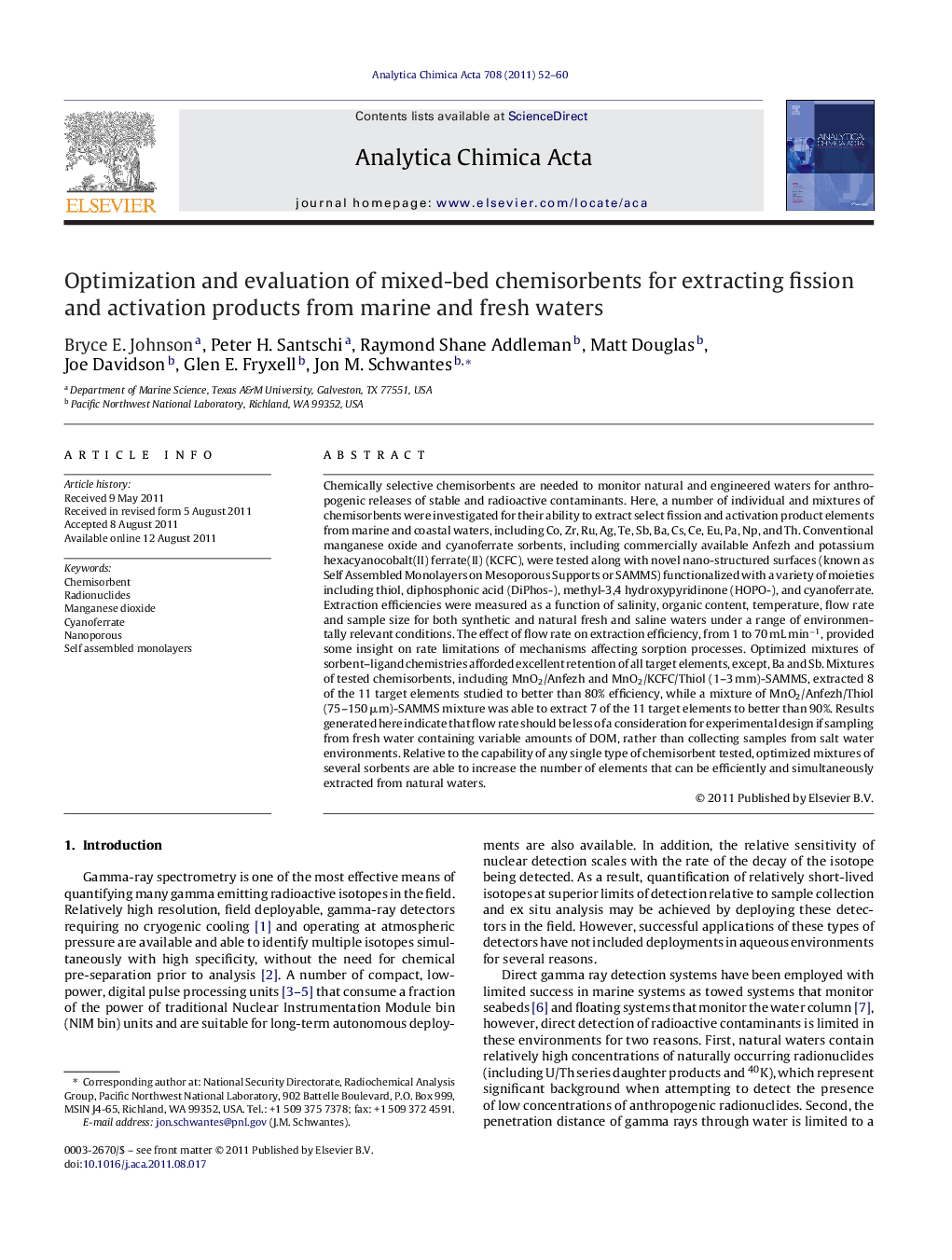| کد مقاله | کد نشریه | سال انتشار | مقاله انگلیسی | نسخه تمام متن |
|---|---|---|---|---|
| 1166379 | 1491124 | 2011 | 9 صفحه PDF | دانلود رایگان |

Chemically selective chemisorbents are needed to monitor natural and engineered waters for anthropogenic releases of stable and radioactive contaminants. Here, a number of individual and mixtures of chemisorbents were investigated for their ability to extract select fission and activation product elements from marine and coastal waters, including Co, Zr, Ru, Ag, Te, Sb, Ba, Cs, Ce, Eu, Pa, Np, and Th. Conventional manganese oxide and cyanoferrate sorbents, including commercially available Anfezh and potassium hexacyanocobalt(II) ferrate(II) (KCFC), were tested along with novel nano-structured surfaces (known as Self Assembled Monolayers on Mesoporous Supports or SAMMS) functionalized with a variety of moieties including thiol, diphosphonic acid (DiPhos-), methyl-3,4 hydroxypyridinone (HOPO-), and cyanoferrate. Extraction efficiencies were measured as a function of salinity, organic content, temperature, flow rate and sample size for both synthetic and natural fresh and saline waters under a range of environmentally relevant conditions. The effect of flow rate on extraction efficiency, from 1 to 70 mL min−1, provided some insight on rate limitations of mechanisms affecting sorption processes. Optimized mixtures of sorbent–ligand chemistries afforded excellent retention of all target elements, except, Ba and Sb. Mixtures of tested chemisorbents, including MnO2/Anfezh and MnO2/KCFC/Thiol (1–3 mm)-SAMMS, extracted 8 of the 11 target elements studied to better than 80% efficiency, while a mixture of MnO2/Anfezh/Thiol (75–150 μm)-SAMMS mixture was able to extract 7 of the 11 target elements to better than 90%. Results generated here indicate that flow rate should be less of a consideration for experimental design if sampling from fresh water containing variable amounts of DOM, rather than collecting samples from salt water environments. Relative to the capability of any single type of chemisorbent tested, optimized mixtures of several sorbents are able to increase the number of elements that can be efficiently and simultaneously extracted from natural waters.
Figure optionsDownload as PowerPoint slideHighlights
► We evaluate mixtures of chemisorbents for extracting radionuclides from water.
► We compare performance of traditional and nanostructured chemisorbents.
► We provide method for simultaneous extraction of Co, Zr, Ru, Ag, Te, Sb, Ba, Cs, Ce, Eu, Pa, Np, and Th.
► We discuss operational optimizations for extraction of radionuclides from water.
Journal: Analytica Chimica Acta - Volume 708, Issues 1–2, 5 December 2011, Pages 52–60